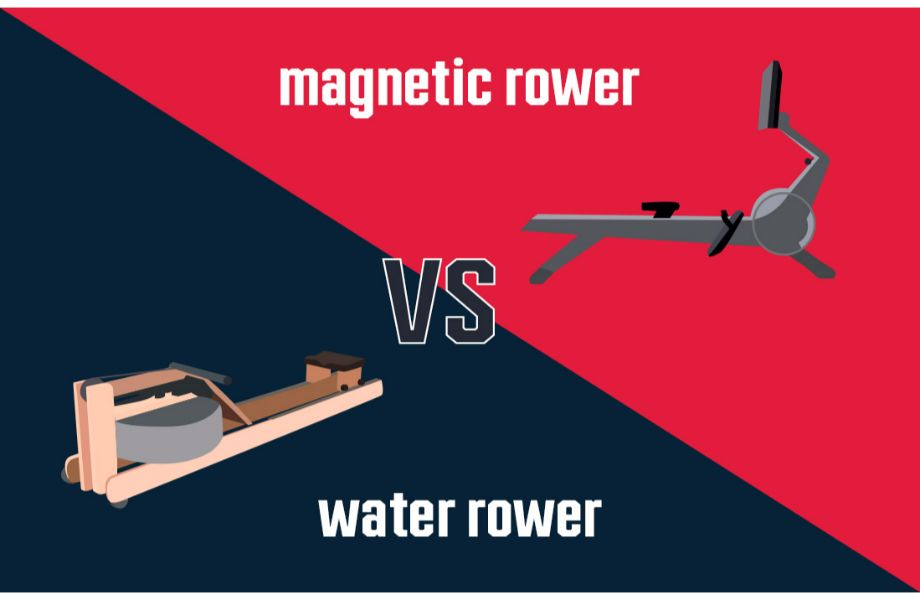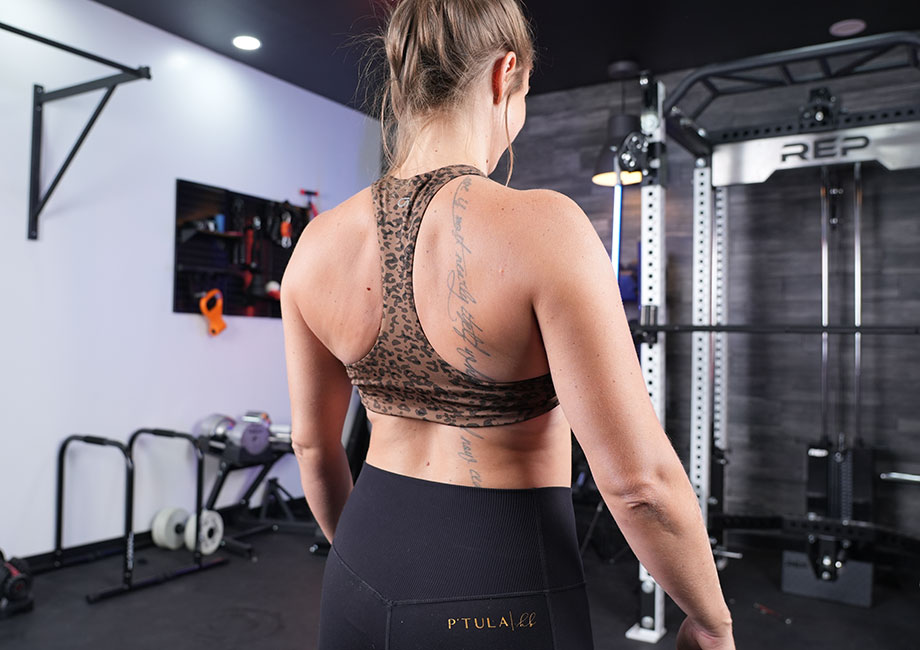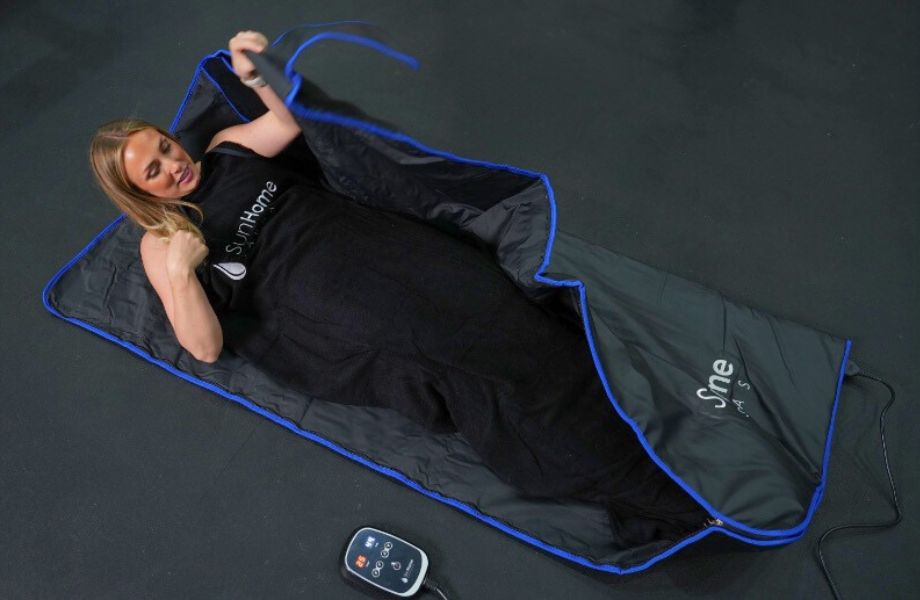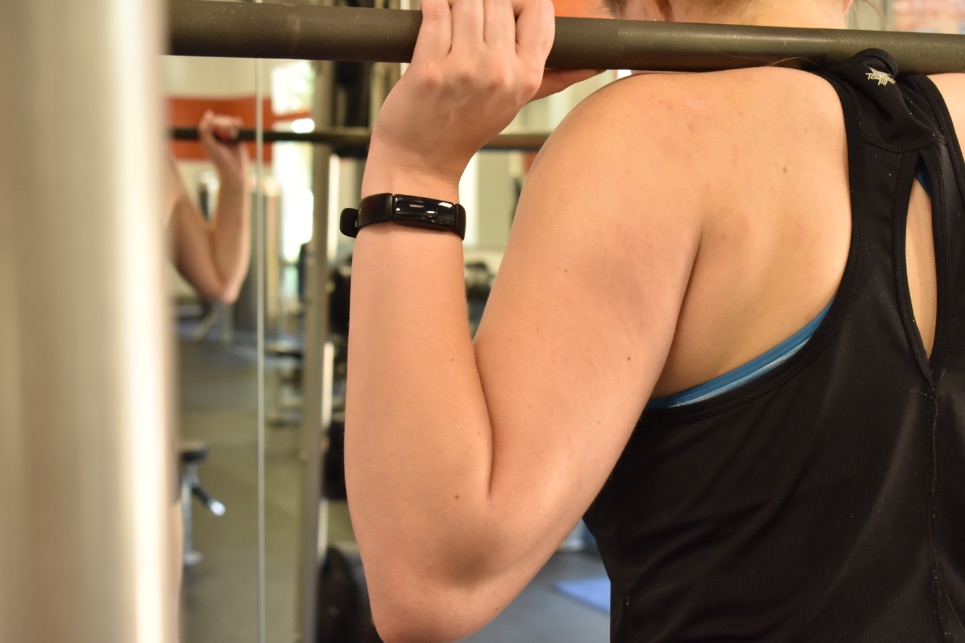The two types of rowing machines have more differences than similarities. Here’s how you can decide which one is right for you.
If you’re looking for a high-quality cardio machine for your home gym, indoor rowing machines are versatile pieces of fitness equipment that work well for all fitness levels. There are four main types—air, water, magnetic, and hydraulic rowing machines.
In this guide, we’ll put two of the most popular types head to head, highlighting the key similarities and differences, to help you determine the best rowing machine for you. Here’s everything you need to know about a water rower vs magnetic rower.
Water Rower vs Magnetic Rower: Quick Comparison
There are many different models of water rowers and magnetic rowing machines. For the sake of this quick comparison, we took spec ranges from our best water rowing machine and best magnetic rowing machine guides.
| Water Rower | Magnetic Rower | |
| Resistance type/flywheel | Water | Magnetic |
| Dimensions | 80 to 86” long 22 to 24” wide 20 to 40” high | 77 to 98” long 21 to 23” wide 22.5 to 54” high |
| Product weight | 92 to 117 lbs (with water) | 50 to 145 lbs |
| Max weight capacity | 300 to 700 lbs | 250 to 500 lbs |
| Monitor/display | Basic performance monitors or integrated smart screens (dependent on model) | Basic performance monitors or integrated smart screens (dependent on model) |
| Price | $500 to $2,199 | $220 to $2,499 |
| Storage | Most don’t fold or come apart for storage, but some can stand up vertically | Depends on the machine, but many have a folding monorail that makes the entire machine foldable for easier storage |
| Maintenance | Wipe down after each row; Chlorine tablet added every six months to two years; if water becomes discolored, empty tank, flush it out, and refill | Wipe down after each row; use a damp cloth to remove dust when needed; check screws and bolts every once in a while and tighten as needed |
Who Should Buy A Water Rower
- Anyone who wants the feel of real, on-water rowing
- Those who care more about the aesthetics/need to place it in a living area
- People looking for unlimited resistance
Best Water Rower
WaterRower
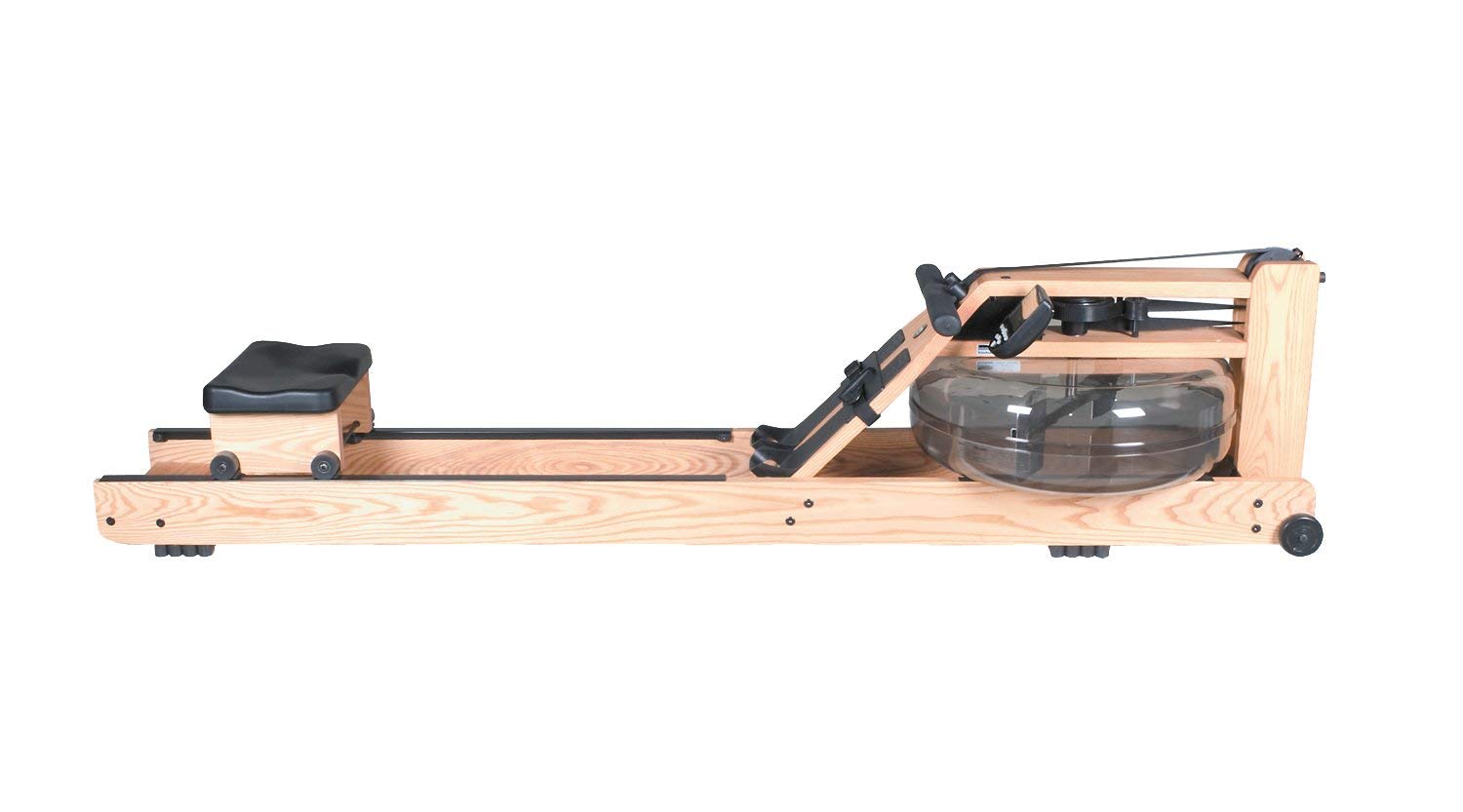
Product Highlights
-
The WaterRower’s wooden frame and durable build quality can support athletes up to 700 pounds.
-
WaterRower offers a range of accessories, including an upgradeable CITYROW Connect monitor for streaming.
-
The WaterRower’s wooden frame supports vertical storage—ideal for those in small spaces.
-
According to our tester, the sloshing water is calming in operation and not noticeable by other homedwellers.
Pros & Cons
Pros
- Water resistance simulates outdoor experience
- The body is made of handcrafted wood
- One of the quietest water rowing machines
- Very aesthetically pleasing
- 700-lb weight capacity
- Optional expert assembly
Cons
- Prices start around $1,300
- Wood can dent and chip
- Weighs 117 lbs
- Monitor location isn’t convenient
Bottom Line
The WaterRower Natural is an excellent rower that uses (drumroll) water instead of air as its main mode of resistance. This closely simulates the resistance you would receive in real-life rowing, and it sounds pretty amazing, too.
Who Should Buy A Magnetic Rower
- Anyone looking for a quiet rowing machine
- Those who want to manually control resistance
- People who have space constraints
Best Magnetic Rower
Hydrow Pro Rower
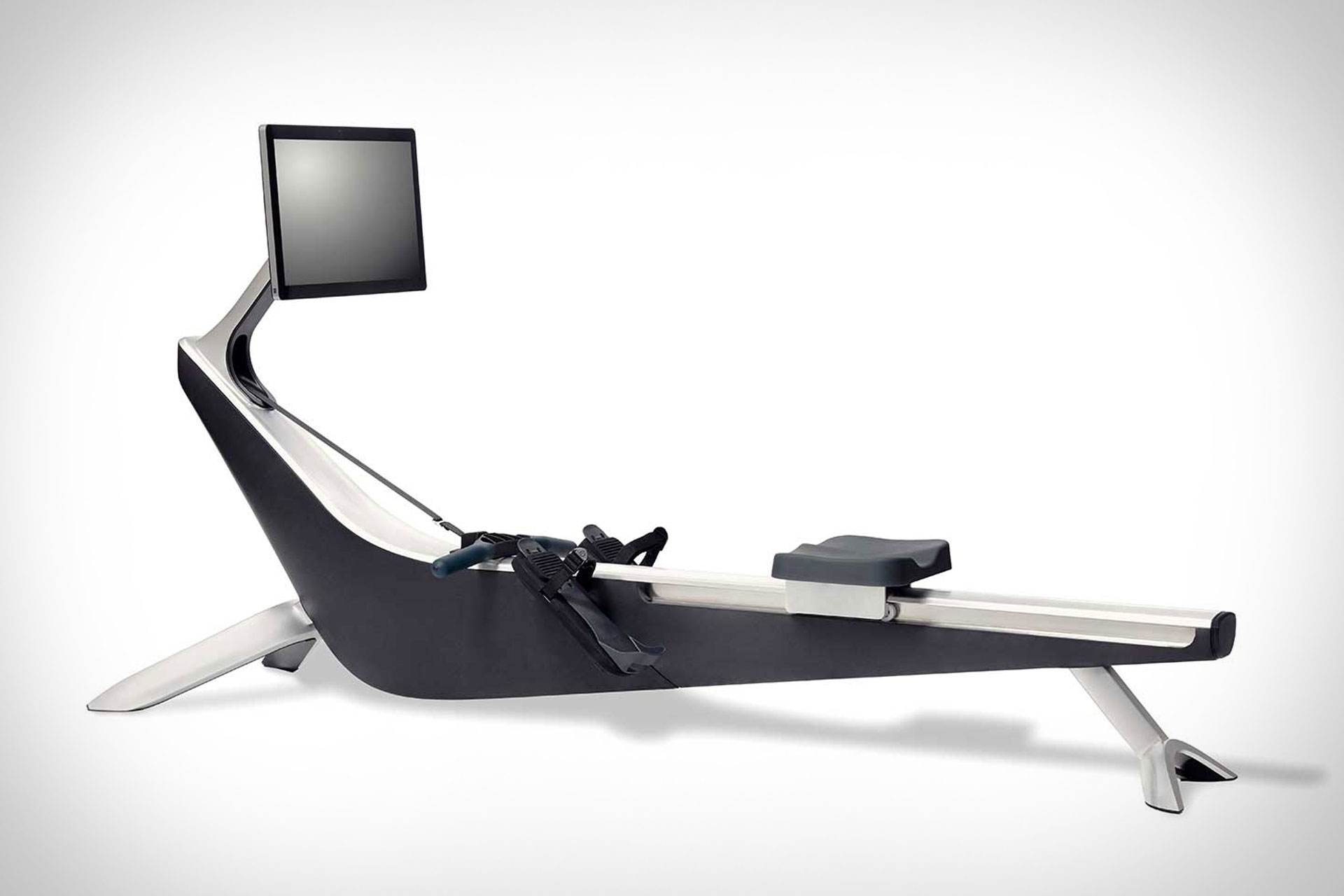
Product Highlights
- Sleek and sexy design
- 16″ touchscreen display
- Magnetic resistance done right
- Gorgeous virtual rowing workouts filmed on location all over the world
- Smooth rowing experience
Pros & Cons
Pros
- Consistent and smooth magnetic rower
- Engaging interactive programming
- Ability to compete against others via a leaderboard
- Sleek and modern design
Cons
- Expensive at just under $2,200
- Additional subscription fee for programming
- Limited customer service contact options
Bottom Line
This is a fantastic, advanced rowing machine ideal for people who have the money to spend and the desire for trainer-led workouts.
Water Rower vs Magnetic Rower: Key Similarities
On a foundational level, both types of rowers are very similar.
“Water rowing machines and magnetic rowing machines ultimately do the same thing: provide a rowing machine workout and track workout data,” says Amanda Capritto, Garage Gym Reviews writer and certified personal trainer. “On either type of machine, you exercise by repeating rowing strokes over a period of time.”
Both types of rowing machines provide a low-impact, full-body workout, improve cardiovascular health, and can help you reach your fitness goals, whether that’s increasing your cardiorespiratory endurance or weight loss. They’re excellent for all fitness levels, including beginners.
Related: Rowing Machine vs. Elliptical
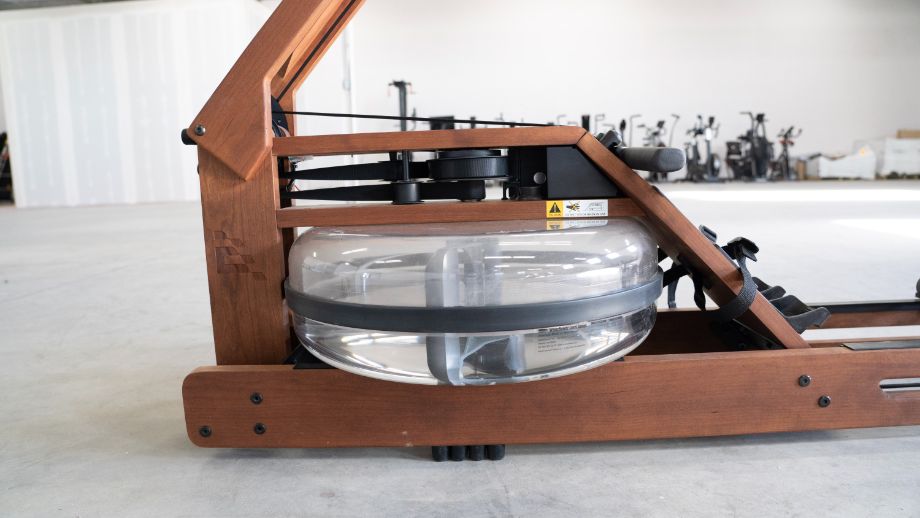
Water Rower vs Magnetic Rower: Key Differences
On a more granular level, there are more differences than similarities between water rowing machines and magnetic rowing machines.
Mechanisms
One major difference is the actual mechanism by which they work.
“Water rowers have a large water tank with a hydrofan inside; you fill this tank with water, and when you tug on the pull mechanism on the rower, the fan creates resistance within the tank,” says Amanda.
On the other hand, magnetic rowing machines create resistance via magnets, or what’s called Eddy currents—magnetic currents created by opposing magnetic fields.
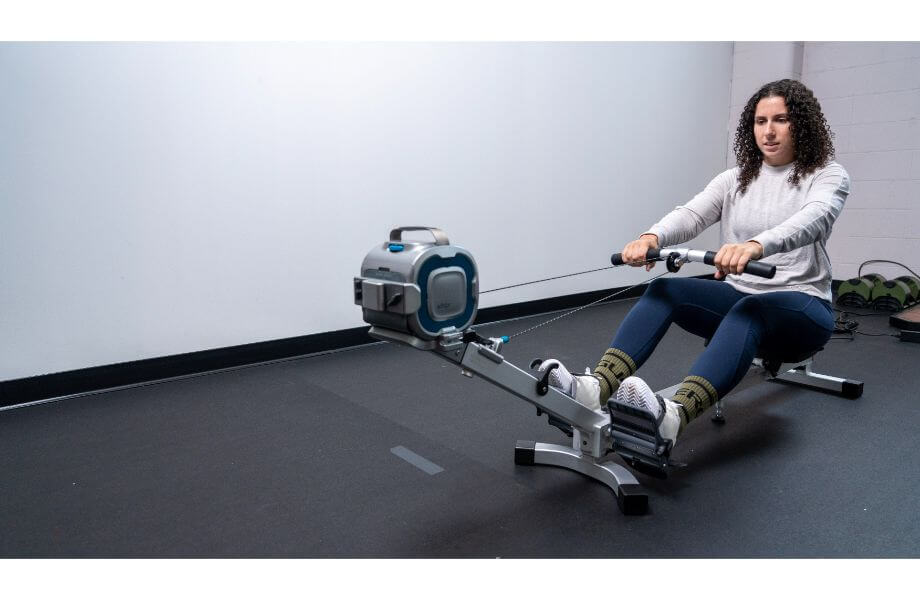
“When you adjust the resistance setting on a magnetic rower, the magnet moves farther away from, or closer to, the flywheel. The currents interact with the flywheel and the closer the magnet is to the flywheel, the more it slows down, which means the resistance increases,” Amanda explains.
Related: How to Use a Rowing Machine
Resistance
The type of resistance varies across the two types of rowers as well. Water rowing machines use water resistance and essentially have unlimited resistance, because it’s entirely user-dependent, according to Amanda.
“The faster you row, the more resistance you create in the water tank,” she explains. “There’s no damper or dial to manually change the resistance.”
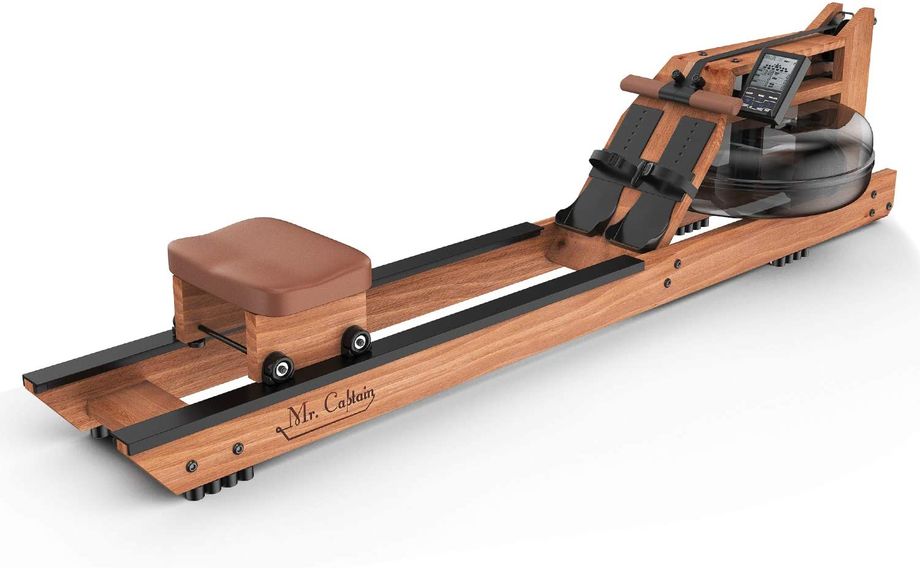
On the other hand, magnetic rowers, which rely on magnetic resistance, give you more manual control over resistance with adjustable resistance levels. This provides a consistent resistance, regardless of your stroke rate.
The actual number of resistance levels varies from machine to machine. Lower-cost machines usually have five to eight levels of resistance, while expensive machines can have 15 to 20 levels, says Amanda.
Rowing Feel
A big draw of a water rower is the rowing feel. Water rowers more closely mimic the natural feel you’d get if you were actually rowing on the open water. Since the tank is full of water, you’ll also hear a whooshing or sloshing sound, which can add to the overall rowing experience for some users.
Related: Rowing Machine Workouts
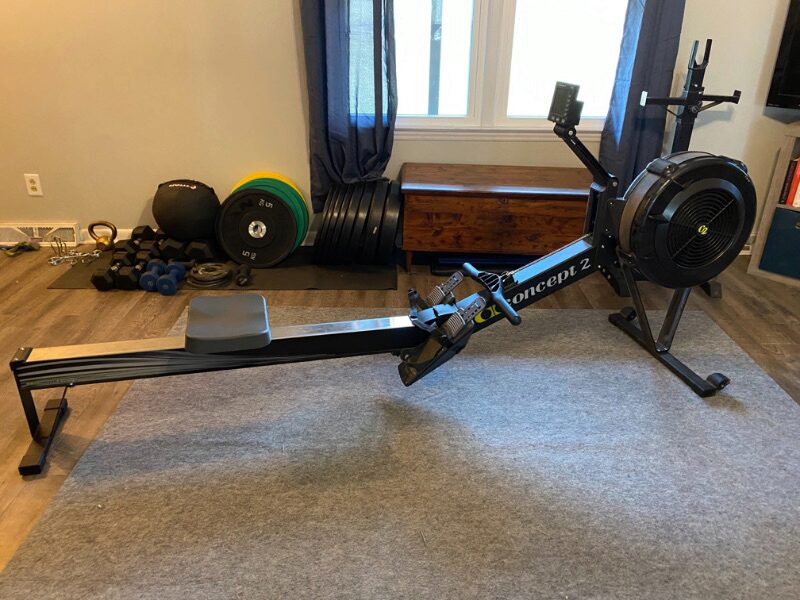
Noise Level
Noise is another consideration. “While both types of machines are pretty quiet [especially when compared to air rowing machines], water rowers are a bit noisier than magnetic rowers due to the sloshing of water in the tank,” says Amanda. Magnetic rowers are considered the quietest type of rowing machines, and some of them are near-silent.
Footprint
There’s also the space factor. There are many different models of each type of machine so the actual footprint will vary, but magnetic rowers are usually a better option if you have limited space.
“Water rowing machines are typically very big and heavy, and do not fold or store vertically,” says Amanda, “although some higher-end models do one or both.”
And while some magnetic rowers are also big and bulky, especially the more expensive options, most of them are foldable or can be stored vertically, she adds. Budget-friendly models of magnetic rowers tend to be smaller, but you might have to sacrifice some advanced features.
Built-in Programming
As for built-in programming, what you’ll get largely depends on the machine. For example, the WaterRower doesn’t have any built-in programming, but the Ergatta Rower (a different water rowing machine) does, thanks to the integrated screen that can stream workouts.
However, as a general rule, magnetic rowing machines (especially those on the more expensive side) tend to be a little more equipped. For example, the Hydrow, our pick for best magnetic rowing machine, has a large HD touchscreen monitor that gives you access to a library of ever-changing live and on-demand workouts.
RELATED: Hydrow Review
Weight Capacity
Water rowers tend to have higher weight capacities thanks to their sturdy, solid wood construction. Even those made of engineered wood have higher weight capacities than some lower-cost magnetic rowing machines. For reference, the WaterRower Natural has a maximum user weight of 700 pounds, while the Hydrow has a max user weight of 375 pounds.
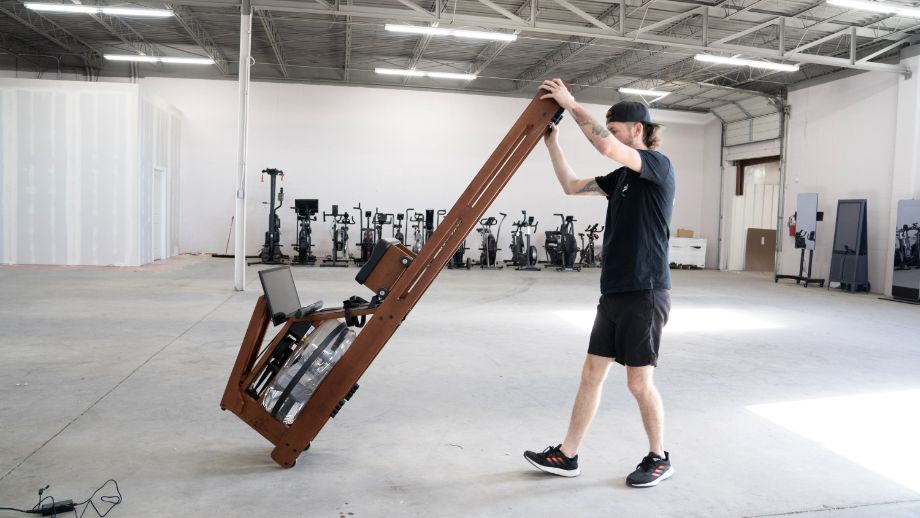
Maintenance
Long-term care is another important consideration. Water rowers require more maintenance than magnetic rowing machines, which pretty much take care of themselves. Amanda points out that it’s possible for mold to grow in the tank of a water rowing machine if you don’t empty and clean it periodically. You’ll also need to add chlorine tablets every six months to two years.
On the other hand, magnetic rowers only require wipe downs and infrequent checking of the bolts and screws. If anything is loose, you can tighten it as needed.
Price
Price largely depends on the specific model you choose, but the range for the two rowers is different, too. The price range of water rowers typically ranges from $500 to $2,199, while magnetic rowers fall between $220 and $2,499. Low-price models come with fewer features than upgraded models. If you want access to streaming workouts, you might also have to pay a monthly or yearly subscription fee.
Final Verdict: Water Rower vs Magnetic Rower
Each type of rower has its own advantages, but one isn’t necessarily better than the other. When deciding which one is right for you, Amanda recommends taking the primary differences—resistance type, footprint/storage, workout programming, and noise—into account to figure out what works for you. Then, once you narrow down the type of rower, weigh many options in each category within your price range before making a decision.
Q&A
Is a water rower or magnetic rower better?
One type of machine isn’t better than the other—it largely depends on what you want. Water rowers offer a smooth stroke that mimics the feel of real rowing and have unlimited resistance, but they tend to be bulkier and less feature-rich.
Magnetic rowing machines are often foldable—so you can stash them away when you’re not using them—and they have adjustable resistance levels. Depending on which one you pick, it might also have more advanced features. The downside is that magnetic rowing machines are louder and the stroke doesn’t feel as authentic.
Are magnetic rowing machines quiet?
Magnetic rowing machines are the quietest of the main types (water, air, magnetic, and hydraulic rowers). Water rowers are pretty quiet, too, but you will hear some sloshing of the water in the tank during each stroke. Air resistance rowers are the loudest.
Is the Concept2 rower magnetic?
The Concept2 rower isn’t magnetic; it’s an air rowing machine that produces resistance by moving air over an internal flywheel. Air resistance rowing machines, like the Concept2 RowErg (previously called the Concept2 Model D), have unlimited resistance levels—the faster you row, the more resistance that’s created. They also have a damper, which is an adjustable tab that manipulates how much air gets into the machine. The damper setting doesn’t change the resistance directly, but it does affect the stroke feel.


